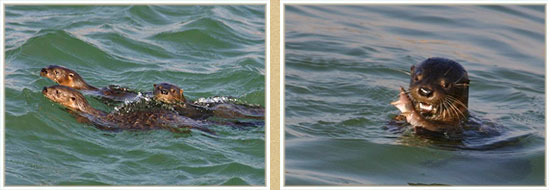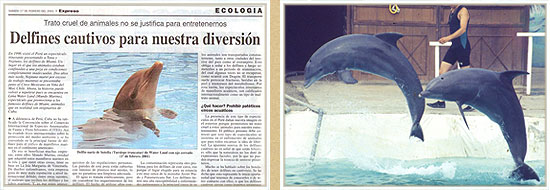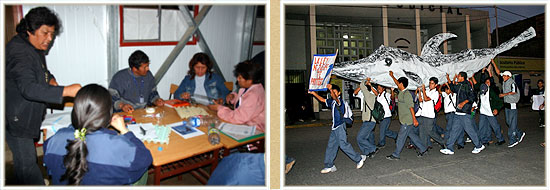Our work
What we did?
Research Program
- We contributed to setting up Peru’s cetacean inventory, which to date reaches 32 species of whales, dolphins, porpoises and species alike. We elaborate the Paracas National Reserve cetacean inventory, currently with 23 species registered.
- Our studies on free-ranging cetaceans, interactions with fisheries and the record of sightings and strandings led us to increase what is known about the biology, ecology and status of these marine mammals. Besides identification of bottlenose dolphins resident groups off the Pisco-Paracas-Chincha coastline we know more about their behavior, feeding habits, reproduction, parasites, skin diseases, the threats they face, etc. This allowed planning and carrying out actions to enhance cetacean conservation status.
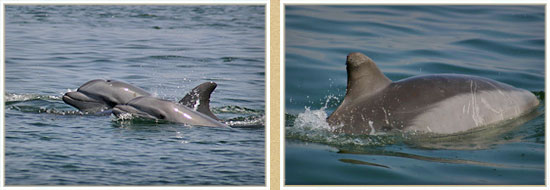
- We determined that 5 of the 7 species of the extant marine turtles occur in the Pisco-Paracas area and the Paracas Bay is a critical feeding area for them. Our studies also found that from the marine turtles captured in the area nearly 75% of green turtles were immature individuals, while 93% of olive ridleys were adult animals. DNA analysis carried out on skin samples indicates that most green turtles come from the Galapagos Islands and Costa Rica, and leatherbacks arrive to Paracas from Central America and probably some islands in the western Pacific.
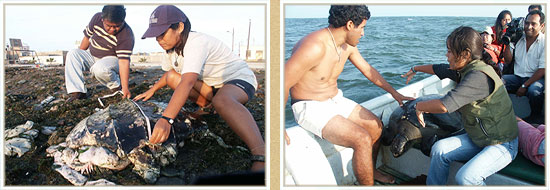
- Our fieldwork in the Paracas National Reserve enabled us to increase and updating the knowledge on the marine otter, in particular about its presence and distribution, identification of new sites of occurrence, behavioral patterns, feeding habits, reproduction and identification of potential threats. A relevant finding is the estimate of only around 40 marine otters in the Reserve’s territory, which should prompt the efforts for conservation of one of the most threatened species in the Peruvian coast.
- We supported annual censuses of Humboldt penguins during the molting season in the Pisco-Paracas area, which comprise one of the largest concentrations of this species in the Peruvian coast. Results of these assessments showed a trend towards increase in the population levels of this species. We also evaluated the interaction of Humboldt penguins with the local fisheries to update the data on its mortality levels of this threatened species due to human activities.

- We studied the pressures from human activities on the marine ecosystem and its biodiversity, with emphasis on the threatened species such as dolphins, Humboldt penguins, marine turtles, Peruvian diving petrel and marine otter. Our work enabled to identify new and potential threats, and to evaluate trends or changes in current threats (such as direct capture, dynamite fishing by catch, trade and consumption, habitat degradation, marine pollution, over fishing of prey species, harassment in their reproductive, feeding and resting areas, captivity, among others).
- We presented the information gathered through our research at national and international events, and publish it in scientific journals together with experts from other institutions. Moreover, these studies are filling up important gaps in our knowledge of marine threatened species. An application of these results is its inclusion as input data for strategies and conservation plans of local, national and regional scope. These data sustain the information disseminated to the public through ACOREMA’s conservation program.
Conservation Program
- Along with other organizations we raised awareness and influenced passing of the Law Nº 26585 or Dolphin Protection Law in Peru.
- In a join effort with similar organizations we successfully concluded the campaign against the arrival of dolphin traveling shows to Peru.
- We participated in a join effort with other Latin American organizations to support the world-wide moratorium on whaling. We also encouraged the non-lethal use of cetaceans through observation of whales and dolphins in the wild, following guidelines for High Quality Whale Watching.
- We linked and disseminated initiatives leading to a Latin American citizenship with a high compromise for the marine and coastal environment conservation, through the production of the Latin American Marine Education Bulletin. The bulletin is distributed to 14 countries in Latin America, besides United States and Europe reaching thousands of users linked to Marine Education, among them teachers, students, biologists, park rangers, guides, communicators, authorities and both public and private organizations.
- We supported the work of the Paracas National Reserve. As part of this we prepared the Plan Estratégico de Educación y Comunicación Ambiental para la Conservación Integral de la Reserva Nacional de Paracas (Period 2002-2006), implemented the Reserve’s Visitors Center (2000) and published the book “Paracas, Nuestra Reserva. Información Básica sobre la Reserva Nacional de Paracas”. Moreover, we participated in the elaboration of the Reserve’s Management Plan, distributed informative materials, organized activities at public places to raise awareness about the Reserve’s biodiversity and provided training for park rangers. Together with its personnel we developed actions to eradicate the dynamite fishing and capture and trade of threatened species.
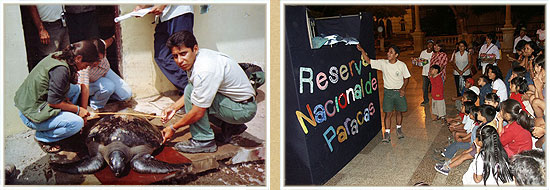
- Since 1998 until 2007, we motivated and raised awareness among nearly 60,000 people visiting our Environmental Interpretive Center on the singularities of the Peruvian sea, its biodiversity and the need to getting involved in conservation, in particular of the marine threatened species. The public included mostly school children from the area and other localities in Peru, besides undergraduates, guides, social communicators, fishermen, park rangers, teachers, authorities and other interested people. This effort resulted in a better informed public with friendly attitudes towards the marine and coastal environment.
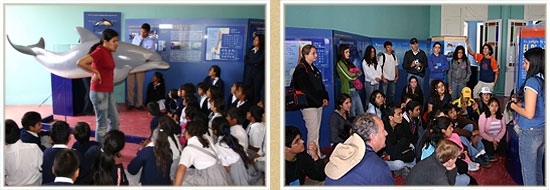
- We opened spaces in the way of workshops (of handcraft, kirigami, radio/TV journalism, wetland monitoring, among other) where groups of children and youngsters from Pisco could develop values, social skills, talents and citizenship based on marine and coastal issues. Thus, participants became individuals driving positive changes within their families and the community. An example: In 2003 we create the “Pisco-Playa Wetland Group” comprised by children and youngsters between 7 and 15 years-old. The Group called attention on the need to recover the local wetlands and ended with the publication of the book “A Guide for the Pisco-Playa Wetlands”, written and illustrated by the Group members on the base of their studies in the field. Today, the book is an important source for authorities and other local publics.
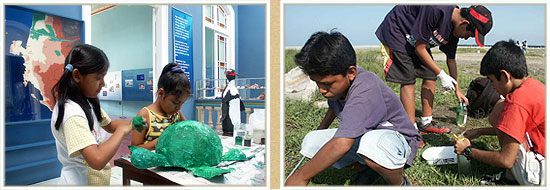
- We promoted and support insertion of marine and coastal issues in the formal education at the local and regional level through teacher workshops, distribution of educational materials, lectures, contests and public exhibitions. As part of this strategy we facilitated communication between teachers from Pisco and their pairs from other Latin American countries. The compromise of a group of teachers and principals from Pisco schools to develop Marine Education in the school curriculum is a much gratifying answer.
- Along with relevant authorities, we carried out both preventing and control operations of the capture and trade of meat and other products from threatened species such as dolphins, marine turtles and Humboldt penguin. These operations were useful in sensitizing the public, resulting in increasing denounces against poachers, seizing, rescue and releasing of marine turtles illegally captured.
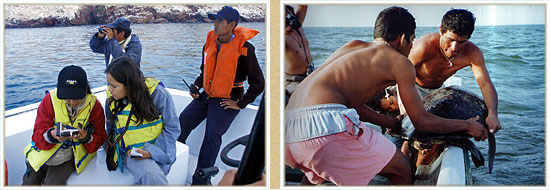
- We developed several awareness campaigns oriented to reduce the capture, trade, petting, consumption of meat and other products, and habitat degradation of marine threatened species such as dolphins, marine turtles, Humboldt penguin, Peruvian diving petrel, marine otter and guano birds. Results of these campaigns were evident when people informed and sensitized showed changes in consumption habits, denounced poachers, and returned voluntarily to relevant authorities some penguins, diving petrels and other wild marine birds they either kept as pets or found stranded in the nearby beaches to be released in their natural environment.


